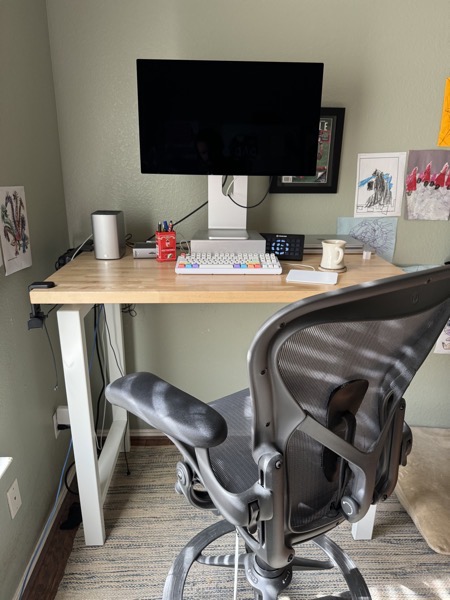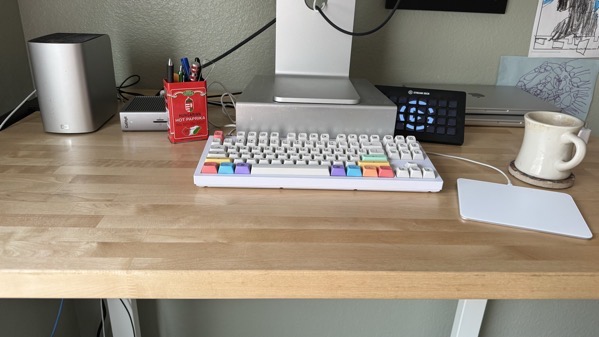Someone tried to pull a “shoebox” scam on me while I was traveling in NYC this week for work. By “shoebox” scam, I am referring to Charlotte Cowle’s The Day I Put $50,000 in a Shoe Box and Handed It to a Stranger. If you haven’t done so already, I implore you to read it.
I don’t typically answer many calls from unknown numbers, but one came in while I was at work that was very possibly from our kiddo’s spring camp. Upon answering, a person on the other line identified himself as a deputy with the county sheriff. After confirming the name and address that this person already had, I was told that I had missed a summons. The implication being that there was some warrant out for my arrest. Already suspicious, I politely told the person that I would call him back at the number listed on the sheriff’s website. He seemed bothered by this and my suspicions were confirmed when he demanded that he call me back from that number. This experience was exactly like one Charlotte had described in her piece.
He told me his name was Michael Sarano and that he worked for the CIA on cases involving the FTC. He gave me his badge number. “I’m going to need more than that,” I said. “I have no reason to believe that any of what you’re saying is real.”
“I completely understand,” he said calmly. He told me to go to the FTC home page and look up the main phone number. “Now hang up the phone, and I will call you from that number right now.” I did as he said. The FTC number flashed on my screen, and I picked up. “How do I know you’re not just spoofing this?” I asked.
“It’s a government number,” he said, almost indignant. “It cannot be spoofed.”
Caller ID can be spoofed, even government numbers. Sure enough, before I could get my call out, another call came in from the number on the website. I could have ignored it, but answered out of curiosity. The person on the other side was not the same person who I was talking to before, but a different man. This man had a southern sounding accent, apt for Texas, and was immediately more intense. When I reiterated that I would call the number back, the intense southern sounding man became threatening. I don’t remember his exact wording, but it was something along the lines of “if you hang up this call, I am going to send a squad car right now and have you arrested.” His threat didn’t really worry me and not because I was in New York at the time, but because it was clearly a gambit to keep me from calling the number. Spoofing Caller ID is just that. It makes a phone call from one number look like it came from another number. In my case, the number spoofed at this point was the one for the actual sheriff’s department so any call back would be received by the actual sheriff’s department and not the scammers. My adversary surely knew this, so his only move was to try and bully me into staying on the call he had started.
I hung up on him and called the actual sheriff’s department using the number listed on their website. Eventually a nice operator sent me to non-emergency dispatch who told me they were aware of the scam and asked if I had given any money to the perpetrators. I told him I hadn’t and asked if there was any way to actually confirm whether there was some sort of summons I missed for ultimate peace of mind. The dispatcher wasn’t really sure, but didn’t seem too worried about it. I then called my wife to let her know what happened, lest the scammers tried her next. Alas no one called her, I assume because they correctly figured that I would warn her immediately.
I have been privately skeptical of Charlotte’s account and not because I thought these scams didn’t exist, rather because there are many aspects of her story that require her to fall for some truly unbelievable aspects. The most notable of which for me was that the FTC/CIA was going to let her take cash out before freezing her accounts, or as redditor Creative_Instinct put it:
CIA: We’re probably freezing your assets because you’re under investigation or under arrest. I don’t even know anymore. But I like you. So. Go take all your money out. This is standard protocol. We warn you, THEN freeze your assets.
That said, I find her more believable having now experienced this sort of scam in person. I was definitely a little rattled by the experience despite having identified the scam early on and can’t imagine what I might have done had I not. Furthermore, that I did suss it out was at least partially due to having read Charlotte’s piece in recent months. I don’t know if I could have been rattled to the extent of putting $50,000 dollars into a shoebox, but having her account top of mind certainly helped regardless.


